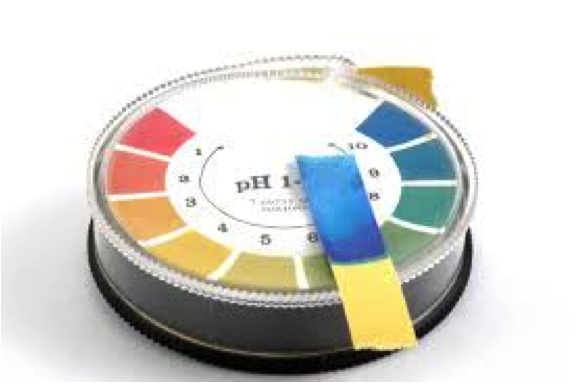After reading the title of this month’s Everyday Soil Science installment you might be scratching your head. Sweet and salty soil? Are you nuts, Soil Sommelier? Of course not!
Sweet and salty soil actually refers to two common chemical indicators of soil health and quality: pH and EC (electrical conductivity).
You’ve probably heard pH used in the description of everyday household items such as soaps, shampoos, medicines, and foods, but may not think much about it in relation to soils. pH generally refers to the acidity or alkalinity of a soil. For those that want to nerd it up, pH is defined as the log10 hydrogen ions [H+] in the soil solution. pH values are represented on a scale that ranges from 0 (most acidic) to 14 (most alkaline); with pH 7 being neutral. pH values that are less than 7 are termed acidic, while values greater than 7 are termed alkaline or basic.
The availability of plant nutrients like Ca+2, Mg+2 as well as the health of important microbes (bacteria, actinomycetes, and fungi) is linked to the pH of a soil. Optimum uptake for most plant nutrients and activity for microbes is attained when the soil pH is in the range 6.5 to 7. Soils in the pH 6.5 to 7 range are considered sweet. In soils where the pH is less than 7, lime in the form of calcium carbonate or magnesium carbonate, or gypsum, is added to raise the pH value to the desired “sweet” range. Soils with a pH greater 7 are often amended with sulfur, iron sulfate, urea, pine needles, or sawdust to lower the pH to the desired value.
Soil pH and plant nutrient availability
 Testing the pH of your soil every fall is a good way to monitor soil acidic/alkalinity and to make adjustments, if needed. Methods for measuring soil pH include test strips, colorimetric test kits, and various types of meters used in the field and laboratory. Routine measurements used for annual monitoring can easily and economically be achieved with high quality test strips or a colorimetric test kit.
Testing the pH of your soil every fall is a good way to monitor soil acidic/alkalinity and to make adjustments, if needed. Methods for measuring soil pH include test strips, colorimetric test kits, and various types of meters used in the field and laboratory. Routine measurements used for annual monitoring can easily and economically be achieved with high quality test strips or a colorimetric test kit.
pH test strips are a fast and economical way to monitor the pH of your soil. A roll, like the one shown, has a retail cost of about $15.
For more detailed information about soil pH, download this factsheet from the NRCS: pH Factsheet
The second chemical measure of soil quality for discussion this month is electrical conductivity (EC). EC is a measure of the electric current carried by soil water. Yes, there is electricity in soil! The electrical current is associated with ions (Ca2+, Mg2+, K+, Na+, NH4+, SO42-, Cl-, NO3-, and HCO3-) held in water-filled pores of the soil.
EC is often used as a measure of soil salinity. The greater the concentration of ions in solution, the greater the soil salinity will be. Soil texture also influences EC. In general, EC increases with the clay content of a soil. High electrical conductivity can dramatically affect the growth of plants, soil structure, and diversity of microbes in a soil.
 This image shows how changes in EC affect the growth of a tomato plant. The plant on the right was treated with non-saline water having a low EC. The plant on the left was treated with very slightly saline water having an EC of 2.6 dS/m.
This image shows how changes in EC affect the growth of a tomato plant. The plant on the right was treated with non-saline water having a low EC. The plant on the left was treated with very slightly saline water having an EC of 2.6 dS/m.
Image courtesy of the USDA, NRCS.
Adding to the concern associated with EC is the new dimension of recycled water (purple pipe) used for irrigation. Recycled water is often slightly to moderately saline, which, when added to naturally high soil salinity can pose a significant management challenge. A similar problem occurs where saltwater has intruded into groundwater and the water table is sufficiently high to make root contact.
Another factor influencing EC is organic matter added as a soil amendment. Manure and compost often add ions to the soil solution that can negatively affect soil quality if the levels are excessively high. The most common methods for decreasing EC are improved drainage and leaching.
Like pH, EC can be easily and economically with a small pocket meter. Taking EC measurements of irrigation water, and soil amendments (like compost and manure) should be performed regularly and monitored.
 Classes of salinity and EC (1 dS/m = 1 mmhos/cm) adapted from the NRCS Soil Survey Handbook
Classes of salinity and EC (1 dS/m = 1 mmhos/cm) adapted from the NRCS Soil Survey Handbook
| EC (dS/m) | Salinity Class |
| 0<2 | Non-saline |
| 2<4 | V. slightly saline |
| 4<8 | Slightly saline |
| 8<16 | Moderately saline |
| ≥16 | Strongly saline |
For more information about EC and soil, download this factsheet from the NRCS: EC Factsheet
You’ve now been introduced to the sweet and salty that influences the quality and health of your soil. Get your test strips and meters and start measuring so that you can monitor and manage your soil resources for sustainability.
Remember, soil sustains life!
~The Soil Sommelier




